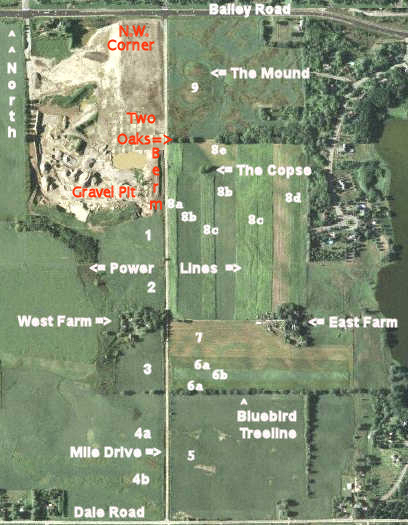
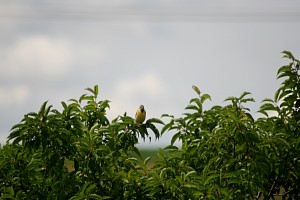 This songbird is a male Dickcissel (Spiza americana) a songbird of the midwest.
The primary wintering grounds for Dickcissel are found in northern South America, although the
species can also be found occasionally in Central America.
Dickcissels migrate in flocks, sometimes gathering
into groups of several hundred birds, and on their wintering grounds in the llanos of Venezuela,
they are extremely gregarious, forming flocks that can number over one million birds.
Return to Birds
This songbird is a male Dickcissel (Spiza americana) a songbird of the midwest.
The primary wintering grounds for Dickcissel are found in northern South America, although the
species can also be found occasionally in Central America.
Dickcissels migrate in flocks, sometimes gathering
into groups of several hundred birds, and on their wintering grounds in the llanos of Venezuela,
they are extremely gregarious, forming flocks that can number over one million birds.
Return to Birds
|
 Dickcissel nests in grasslands, meadows, savanna, and hay fields. Its nest is a bulky, loose cup
of woven grass and leaves, usually placed in a grassy field. Males arrive at breeding territories
about a week before females, and may have more than one mate. Females are responsible for nest
building and incubation, usually of a clutch of four eggs.
Dickcissel nests in grasslands, meadows, savanna, and hay fields. Its nest is a bulky, loose cup
of woven grass and leaves, usually placed in a grassy field. Males arrive at breeding territories
about a week before females, and may have more than one mate. Females are responsible for nest
building and incubation, usually of a clutch of four eggs.
|
|
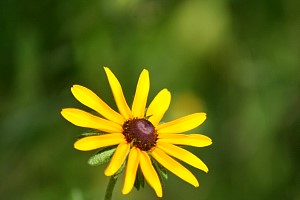
Sweet Black-eyed Susan (Rudbeckia subtomentosa), also known as Sweet Coneflower.
Mile Drive is at the western-most range of this plant. I think my identification is
correct because of the ring of smaller green petals beneath the yellow petals.
This is a taller native cousin of the famous Black-eyed Susan.
Return to Flora
|
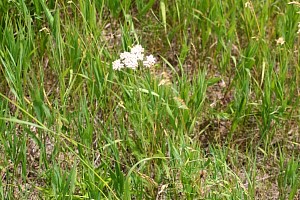
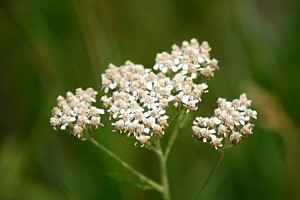 Yarrow (Achillea millefolium ), also called Milfoil, is a perennial native to North America.
Dairy cattle who eat yarrow give off-flavoured milk.
Yarrow has been valued since ancient times for its ability to stop bleeding, hence its
folk name "nosebleed." A piece of the plant held against a wound will staunch bleeding.
Return to Flora
Yarrow (Achillea millefolium ), also called Milfoil, is a perennial native to North America.
Dairy cattle who eat yarrow give off-flavoured milk.
Yarrow has been valued since ancient times for its ability to stop bleeding, hence its
folk name "nosebleed." A piece of the plant held against a wound will staunch bleeding.
Return to Flora
|
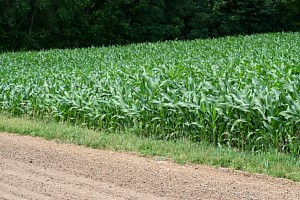
The corn is knee high already owing to plenty of moisture so far this summer.
|
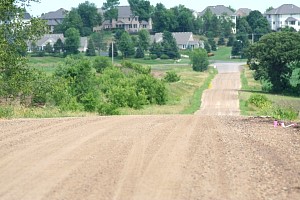
A telephoto camera shot, making it seem more hilly that it is. The trick is to capture both
the slight rise in the foreground and the view in the distance.
|
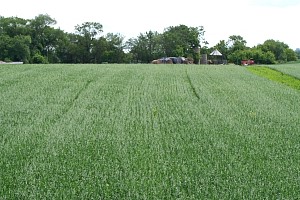
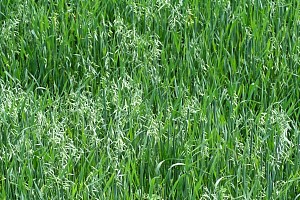
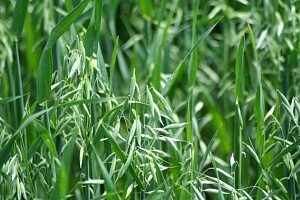 Successive close ups to show how the oats are coming along in field #7.
Successive close ups to show how the oats are coming along in field #7.
|
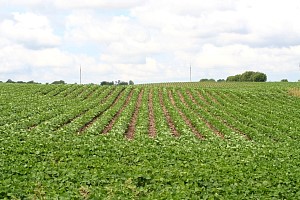
The soybean plants are starting to look bushy.
|
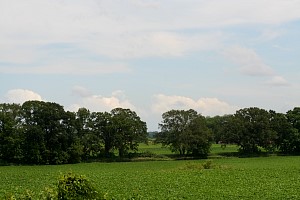
The view of the fully-leaved trees of Bluebird Treeline.
You can tell the humidity in the air - look at the growing clouds in the distance.
|
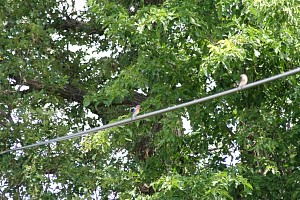
Enlarge this picture and look dead center - you will see an Eastern Bluebird (Sialia sialis).
Eastern Bluebirds are semicolonial nesters and tend to nest where other bluebirds
have already settled. This explains why I see so many when I walk down along Bluebird Treeline.
Eastern Bluebirds typically feed by dropping down from low perches to capture grasshoppers and
other insects and arthropods on the ground. They have good eyesight and can locate small food
items from more than 100 feet away.
|

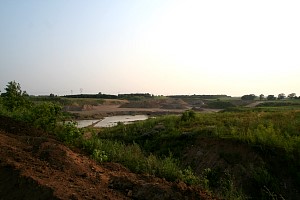
The gravel company is terraforming - this pseudo-ravine is history, along with the nesting holes
of a kingfisher (I never got a photo) and some cliff swallows. This will also destroy some
blackberry bushes and a whole host of flora.
|

This strip including the Copse is being for as a hayfield. The elderly farmer keeps about a
dozen cows and he needs the hay grown here to feed them.
|
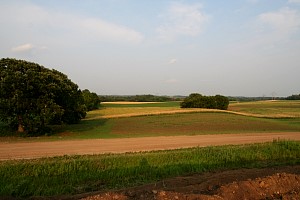
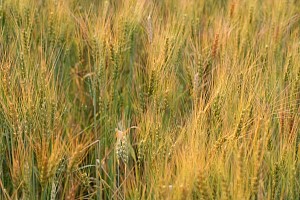
I got on top of a mound across from Two Oaks and took this picture. In the mid-distance just before
the deep green corn you can
see the barley field. Here is a close up of the growing barley heads.
|
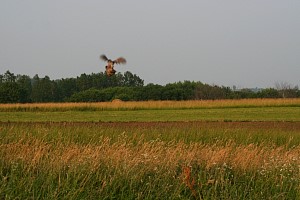
I walked along in the hayfield and took a picture of what I thought was a flushing pheasant.
Enlarge this and look at it - it looks to me like a hawk carrying a pheasant. That's all I
can figure out. Notice the hawks legs are extended - no hawk would fly this way unless
it was carrying prey. I know hawks love to dine on pheasant.
return from hwak and pheasant
Return to Birds
|
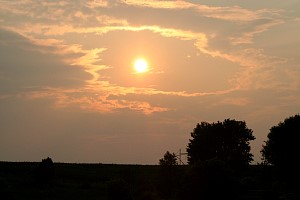
Sunset over the West Farm.
|